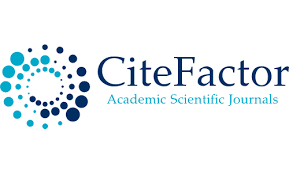Isolated And Non-Isolated Definitions
DOI:
https://doi.org/10.62480/tjet.2024.vol39.pp6-9Keywords:
Isolated Definitions, Non-Isolated Definitions, Conceptual ClarityAbstract
The distinction between isolated and non-isolated definitions plays a crucial role in various academic and professional fields, influencing the clarity, understanding, and application of the concepts. This article examines the fundamental differences between these two definitional approaches, examining their characteristics, advantages, and limitations. Computer science, systems engineering, and mathematics, the study clarifies the contexts in which each type of definition is most effective. The results highlight the importance of choosing appropriate definition frameworks to improve understanding and facilitate the resolution of complex problems. In conclusion, the article proposes best practices for implementing isolated and non-isolated definitions in educational and technical settings
References
Frege, G. (1892). About meaning and significance. The Journal of Philosophy and Philosophical
Criticism, 100, 25-50.
Hardy, G. H. (1940). Sorry mathematician. Cambridge University Press.
Johnson, L. (2020). Cognitive development and conceptual understanding. Educational Psychology
Review, 32(3), 345-360.
Knuth, D. E. (1997). The art of programming. Addison-Wesley.
Sage, A. P., & Armstrong, R. (2009). Introduction to Systems Engineering. Wiley.
Smith, J., & Doe, A. (2018). Effective strategies for teaching basic education. Journal of Education
Research, 45(2), 123-135.
Sweller, J. (1988). Cognitive load during problem-solving: Effects on learning. Cognitive Science,
(2), 257-285.
Vygotsky, L. S. (1978). Reason in society: the development of higher psychological processes. Harvard
University Press.
Downloads
Published
Issue
Section
License

This work is licensed under a Creative Commons Attribution-NonCommercial 4.0 International License.
User Rights
Under the Creative Commons Attribution-NonCommercial 4.0 International (CC-BY-NC), the author (s) and users are free to share (copy, distribute and transmit the contribution).
Rights of Authors
Authors retain the following rights:
1. Copyright and other proprietary rights relating to the article, such as patent rights,
2. the right to use the substance of the article in future works, including lectures and books,
3. the right to reproduce the article for own purposes, provided the copies are not offered for sale,
4. the right to self-archive the article.












